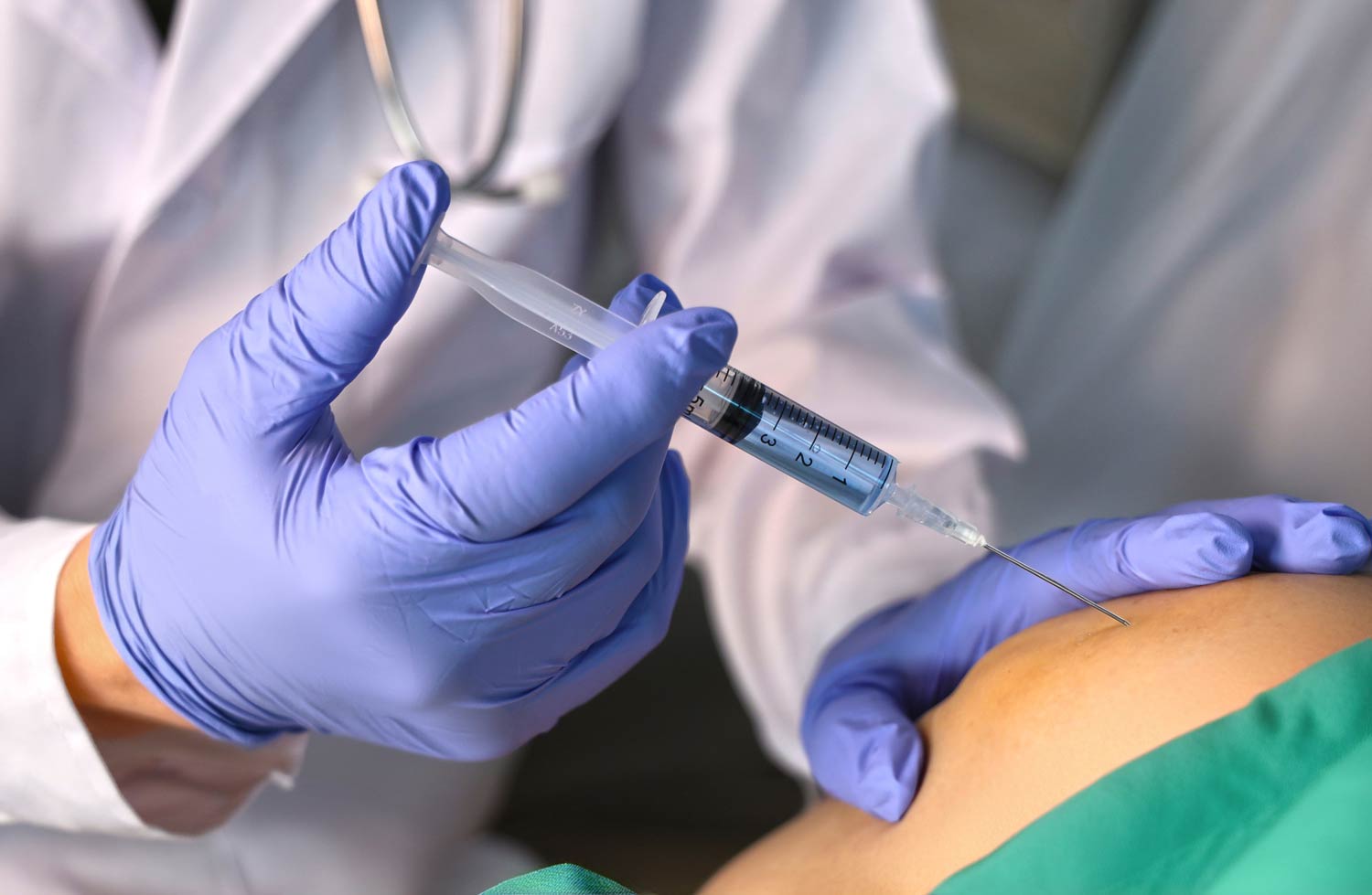Orthopedic Injections
Orthopedic injections deliver medicine directly into joints, tendons, or ligaments to relieve pain and reduce inflammation. Injections can help with pain caused by arthritis, tendonitis, bursitis, carpal tunnel syndrome, and other conditions.



Corticosteroid Injections
A steroid injection is a shot of medicine used to relieve a swollen or inflamed area that is often painful. It can be injected into a joint, tendon, or bursa. Your health care provider inserts a small needle and injects medicine into the painful and inflamed area. Depending on the site, your provider may use an x-ray or ultrasound to see where to place the needle.
You will be given a local anesthetic along with the steroid injection to relieve your pain right away. The steroid will take 5 to 7 days or so to start working.
BURSITIS TREATMENT
A bursa is a sac filled with fluid that acts as a cushion between tendons, bones, and joints. Swelling in the bursa is called bursitis. Using a small needle, your provider will inject a small amount of corticosteroid and a local anesthetic into the bursa.
JOINT PAIN TREATMENT
Any joint problem, such as arthritis, can cause inflammation and pain. Your provider will place a needle in your joint. Sometimes ultrasound or an x-ray machine may be used to see where exactly the location is. Your provider may then remove any excess fluid in the joint using a syringe attached to the needle. Your provider will then exchange the syringe and a small amount of corticosteroid and a local anesthetic will be injected into the joint.
TENDONITIS TREATMENT
A tendon is a band of fibers that connects muscle to bone. Soreness in the tendon causes tendonitis. Your provider will put a needle directly adjacent to the tendon and inject a small amount of corticosteroid and a local anesthetic.
Viscosupplementation
If you have tried other nonsurgical treatment methods and your pain continues to limit your activities, viscosupplementation may be an option.
With viscosupplementation, a gel-like fluid called hyaluronic acid is injected into your joint. Hyaluronic acid is a naturally occurring substance found in the synovial fluid surrounding joints where it acts as a lubricant to enable bones to move smoothly over each other and as a shock absorber for joint loads.
People with osteoarthritis have a lower-than-normal concentration of hyaluronic acid in their joints. Adding hyaluronic acid to the arthritic joint may facilitate movement and reduce pain.
Working with the staff at Newman Regional Health Orthopedics & Sports medicine, you will receive one to five shots over several weeks.
Depending upon the patient, the provider may administer a local anesthetic to numb the joint prior to injecting the hyaluronic acid. In some cases, you may need to have excess fluid drained from the knee proper to the injection. Usually, the aspiration and the injection are done using only one needle injected into the joint, however, there are occasions where two separate syringes are preferred.
The procedure is conducted on an outpatient basis. For the first 48 hours after the shot, you should avoid excessive activity, such as jogging or heavy lifting.








